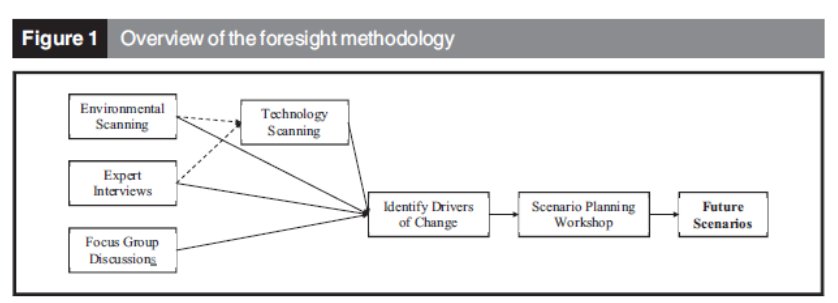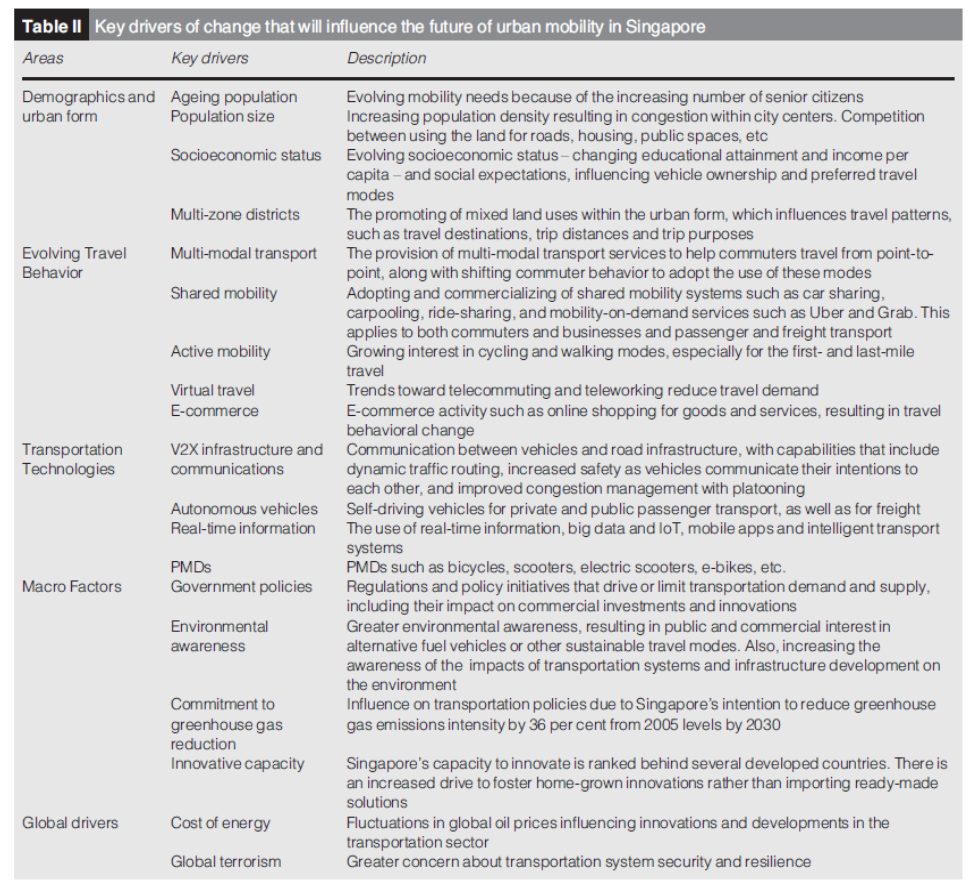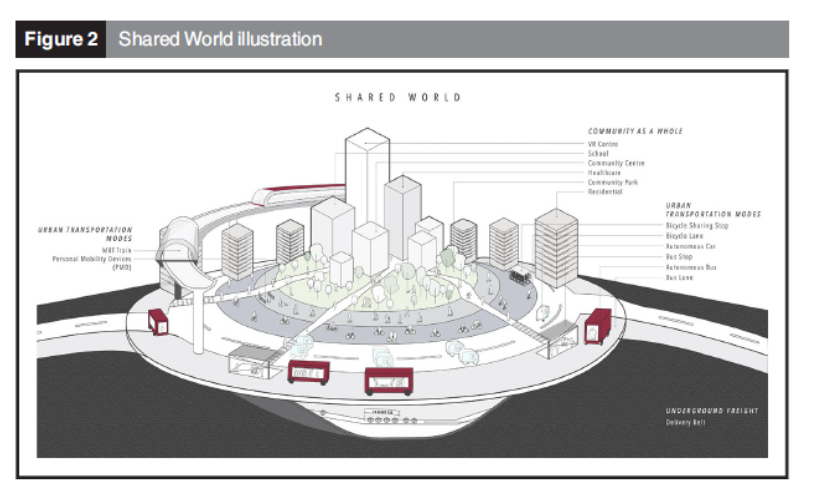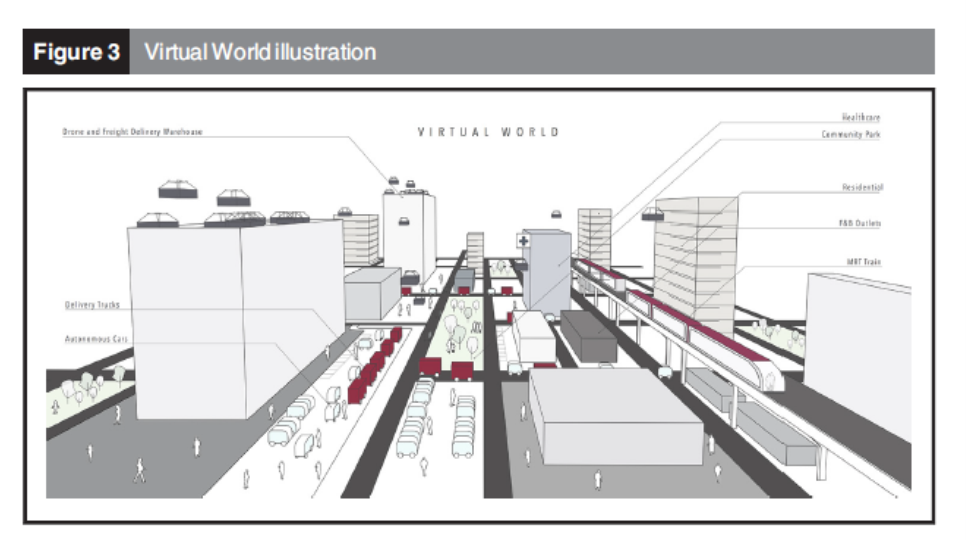The transportation system in any city is complex and evolving, shaped by various driving forces and uncertainties in the social, economic, technological, political and environmental situations. Its development and demands upon it cannot be projected by simply extrapolating past and current trends. Authors Seyed Mehdi Zahraei, Jude Herijadi Kurniawan and Lynette Cheah published an article based on research supported by the Singapore Ministry of National Development and National Research Foundation named “A foresight study on urban mobility:Singapore in 2040”, with the aim to present a foresight study examining the future of urban mobility, focusing on the dense Asian city-state of Singapore. The objective of the article is to develop scenarios for the future of urban mobility, to facilitate future policy implementation by highlighting long term challenges and opportunities for transportation planning in cities.
To create future scenarios, the researchers first sought to identify key drivers of change through environmental scanning, expert interviews, focus group discussions and technology scanning.

Demographics. The total fertility rate in Singapore has been below the replacement rate of 2.1 for more than three decades. Consequently, elderly residents will account for about a quarter of Singapore’s population in 2030.
Technological advancement. The second common thread is that the two scenarios have the general advancement of technology across multiple fields, ranging from transportation technologies, mobility modes, and mobile devices to infrastructural developments.

Scenario 1: Shared World
The first scenario depicts a radical shift toward a shared-living lifestyle. In the Shared World, people have embraced community living and shared-resources lifestyle featuring two key aspects: shared mobility and multi-zone districts. Shared mobility is an innovative transportation strategy that enables users to gain short-term access to transportation modes on an as-needed basis. Examples of shared mobility include various forms of car sharing, bicycle sharing and ridesharing.Key features in this scenario are:
Government policies. The government has taken up the dominant role in shaping the mobility landscape and designing a new urban form with a focus on developing shared mobility systems.
Mobility modes. The primary modes of transport within the shared world district are autonomous shuttle buses, shared PMDs and a vibrant culture of active mobility. Infrastructure, like bicycle pathway networks, built in the early 2020s makes walking and cycling more conducive, comfortable and efficient for traveling short distances. By 2030, in favor of making “car-lite” zones, cars have restricted access to roads within districts. By 2040, each district has an efficient autonomous bus network. Apart from autonomous shuttle buses, people also rely heavily on active mobility and shared PMDs for traveling within districts. First introduced in late 2010s, shared PMDs are extensively used for intra-districts trips, as well as first- and last-mile trips to/from MRT stations as “park-and-ride” and “shared stops” facilities at stations provide convenience for commuters to park their PMD and transfer to a train.
Urban freight. In this scenario, e-commerce has grown significantly, but still accounts for less than two-thirds of total retail. Most people still enjoy shopping at brick-and-mortar stores given its social dimension. However, they no longer need to carry their purchases with them because of a new form of delivery service within the districts. A web of underground tunnels connects each residential cluster to shopping centers and supermarkets. Purchases are tagged with the recipient’s address and deposited at delivery centers located inside the shopping malls. By the time the buyers reach home, their goods are waiting at the goods receiving center at or near their residential complex.

Shared world scenario implications.
Individual. A shared world is likely to be a favorable scenario for individuals. The new public transport chain, comprising autonomous buses and MRT, will become more efficient, as autonomous buses will solve issues of bus bunching and erratic schedules, and PMDs will provide first- and last-mile transport for commuters to access the MRT. Individuals will no longer feel the need or the desire to buy a car as shared mobility systems become affordable and more efficient.
Society. On the societal level, this scenario will have largely positive implications as well. With greater utilization per vehicle and lower demand for parking lots, more land is freed up for other purposes. In addition, the overall decrease in congestion will increase public satisfaction and reduce the transportation of environmental externalities and their union.
Industry. There will be a mix of winners and losers in industries. On one hand, the conventional taxi industry is likely to suffer from the emergence of shared mobility systems and will have to innovate to compete with the evolving industry. On the other hand, there will be new business opportunities for social network and technology companies as they are likely to form the backbone of shared mobility systems.
Government. In the new urban form, more meticulous planning will be required to determine the right mix of commercial, residential, and industrial developments for each district. Similarly, there will be a need to develop routes and infrastructure for autonomous buses, active mobility and intra-district travel. Moreover, as multi-zone districts start to develop, there will be a need to constantly monitor traffic patterns and underlying causes. The government will also need to establish clear resolutions on legal liability issues for shared vehicles and in freight through legislative frameworks. Public and private sector players will need to collaborate to ensure the success of shared-service models.
Scenario 2: Virtual World
The virtual world scenario depicts a future where virtual reality technology is pivotal in everyday life. In this scenario, the artificial intelligence (AI) and internet-of-things (IoT) technologies are pervasive, altering many social norms. One significant change is the concept of self-actualization. Because people can access a wealth of online information without having to rely on others, they have developed a sense of individualism. The concept of individualism is much rooted in society – everything is built tailoring to individualism. ” Key features in this scenario are:
Government policies. In this scenario, the government plays a supportive role while the market plays a dominant role in driving innovation and systems. In the early 2020s, the regulatory environment is conducive for companies and start-ups to test new technologies and introduce new business models quickly in Singapore.
Mobility modes. The primary mode of transport in this scenario is the personal travel pod. The innovation of autonomous travel pod originated from advanced PMDs and autonomous city concept cars, which both had gained prominence in the 2010s-2020s. An autonomous pod is a fully enclosed capsule that seats two people and comes with a fully functional workstation. The pod is not only a mere mobility device but also an artificial intelligent “life form,” acting as owners’ personal assistant and “avatar.” Owners can program their pods to carry out various tasks, such as picking up groceries from stores or attending office meetings in situ as instructed. The government embarks on an ambitious plan to “pod-everything” in the late 2030s. According to this plan, all personal vehicles on the road are autonomous pods.
Life and work style. While personal travel pods have emerged the primary mode of transport, travel demand has reduced significantly due to the emergence and rapid adoption of virtual travel and communications. Virtual travel – the use of technologies such as holography, augmented reality and virtual reality – has enabled people to engage in constructive meetings despite not being physically present at the same location. By the mid-2030s, virtual reality technology is capable of augmenting real-life environments, allowing people to work, study and shop without leaving the comfort of their homes.
Urban freight. E-commerce is widely adopted as the preferred mode of shopping after 2020. By the late 2030s, AI is able to predict individual buying behavior, and goods are delivered even before the purchases have been made, aided by anticipatory logistics. In this age of technology, urban freight is being moved primarily by autonomous freight robots and delivery drones. In the food sector, robots and drones are now the primary modes of home/office deliveries. In this scenario, overall travel demand is significantly reduced as people spend most of their time plugged into virtual reality and assisted by AI. When people travel, they use personalized autonomous travel pods. This future has not only much less congestion but also much fewer physical interactions and vibrancy.
Individual. The Virtual World scenario is likely to be favorable for individuals because of tremendous time savings. Individuals can conduct their day-to-day activities in virtual worlds, and autonomous pods provide personal transportation services to all segments of society. Time freed up from commuting becomes leisure time for people to engage in recreational and social activities. This scenario will also make it possible for the elderly and handicapped to participate actively in their communities with little travel constraints.
Society. The study stress that Singapore will experience much less congestion as people adopt virtual lifestyles, reducing travel demand and its associated traffic and environmental impacts.
On the flip side, society might experience large-scale unemployment woes as automation and AI can replace human workers in several industries. In terms of social interaction, there could possibly be a negative implication on society should individuals become increasingly more isolated with little social engagements or none at all. Industry.
Government. The regulatory environment may change to support high-technology developments in Singapore. For example, the transport planning authority may consider supporting certain telecommunication regulations necessary to ensure the smooth operation of an intelligent transportation system.

Discussion and conclusion
At first glance, the two scenarios may appear similar because both scenarios depict a technological leap within the urban mobility sector. However, the authors observe one significant difference: the shared world represents a worldview that takes on a micro-scale perspective, emphasizing communal living, safety, affordability and shorter-distance travel, and also tends to display social connectedness. The virtual world, on the other hand, is more individualistic where people emphasize the speed of travel, either physically or virtually, and distance is no longer a barrier to mobility.
While each scenario has presented a different dominant transport mode, this, in turn, further begs the questions about who owns, who maintains this transport mode, what we can do to get to the future we so desire from here, and how – in other words, making sense of the scenarios, which needs further research inquiry. Hence, the researchers conclude that one of the next steps is to organize workshops with a broader audience to stimulate dialogs that revolve around the two visions to pry more deeply into the motivation for how aspects of particular ideal scenarios can be realized.